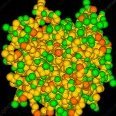Community First Anthrax Case Detected in Sa Kaeo, Health Officials to Investigate Source
-
Recently Browsing 0 members
- No registered users viewing this page.
-
Topics
-
-
Popular Contributors
-
-
Latest posts...
-
1
Headline: Git Blocks Pattaya Ambulance at 4am, Shocks No One!
This was covered in the Thai news section. As this is discussing a more general opinion, both topics are OK. -
11
THAILAND LIVE Thailand Live Wednesday 13 August 2025
Village Headman Shot and Critically Injured While Buying Durian Picture courtesy of Daily News. Police in Yala province are investigating the attempted murder of a village headman who was shot and seriously wounded late on 11 August while purchasing durians. The attack bears chilling similarities to the fatal shooting of his father in the same month last year. Full story:https://aseannow.com/topic/1369540-village-headman-shot-and-critically-injured-while-buying-durian/ -
0
Crime Village Headman Shot and Critically Injured While Buying Durian
Picture courtesy of Daily News. Police in Yala province are investigating the attempted murder of a village headman who was shot and seriously wounded late on 11 August while purchasing durians. The attack bears chilling similarities to the fatal shooting of his father in the same month last year. The victim, Mr Ahamah Mahni, headman of Village 3 in Khuean Bang Lang subdistrict, Bannang Sata district, was at a durian buying stall in Banang Sareng subdistrict, Mueang Yala, when gunmen opened fire from nearby scrubland. One bullet struck him in the back, causing him to collapse. Local residents rushed him to Yala Regional Hospital, where doctors performed emergency surgery. His condition is reported as critical. On 12 August, explosive ordnance disposal officers, forensic police and a joint task force inspected the scene. Several vehicles, including an Isuzu MU-X and multiple motorcycles, were parked at the stall and investigators collected evidence in an effort to identify the perpetrators. Police are probing whether the shooting was motivated by personal conflict or linked to the ongoing unrest in the region. Investigators are also examining possible connections to the murder of Mr Ahamah’s father, Mr Muli Mahni, a durian trader who was gunned down alongside Mr Prakit Klomsard on 21 August 2024 in Ban Sai Kaeo, Taling Chan subdistrict, Bannang Sata. Authorities say they are treating the case as a priority and are working to determine whether both attacks were carried out by the same group. Adapted by Asean Now from Daily News 2025-08-13 -
11
THAILAND LIVE Thailand Live Wednesday 13 August 2025
Drug Gang Crashes in Chase, 110kg Crystal Meth Seized Picture courtesy of Daily News. Chiang Rai police have seized 110 kilograms of crystal meth after a dramatic late-night pursuit in which a drug gang’s getaway ended in a crash. Full story:https://aseannow.com/topic/1369539-drug-gang-crashes-in-chase-110kg-crystal-meth-seized/ -
0
Crime Drug Gang Crashes in Chase, 110kg Crystal Meth Seized
Picture courtesy of Daily News. Chiang Rai police have seized 110 kilograms of crystal meth after a dramatic late-night pursuit in which a drug gang’s getaway ended in a crash. On 12 August, officers from Mueang Chiang Rai Police Station, under the direction of Pol Maj Gen Manop Saenakul, Chiang Rai Provincial Police Commander, and Pol Col Sophon Muangfuang, station chief, were conducting an anti-drug checkpoint on Sri Wiang Road in the municipality as part of the “No Drugs, No Dealers” campaign. At around 02:00, officers spotted a black Toyota Avanza, registration from Bangkok, parked just short of the checkpoint. As they approached, the driver suddenly accelerated away at high speed, prompting police to give chase. The pursuit ended near a railway construction site when the suspect’s vehicle crashed on a bend. The driver fled on foot into nearby woodland under the cover of darkness and managed to evade capture. A search of the abandoned vehicle uncovered four large sacks containing crystal methamphetamine, weighing a total of about 110 kilograms. Police have impounded the drugs and the vehicle, and are now working to identify and track down those responsible. Authorities say the haul represents a blow to the regional drug trade and have vowed to intensify operations to prevent narcotics trafficking through Chiang Rai. Adapted by Asean Now from Daily News 2025-08-13 -
3
Entertainment Thailand Eyes Global Stage with Tomorrowland Investment
Its gone from "locked in" to "potential hosting"?
-
-
Popular in The Pub








Recommended Posts
Create an account or sign in to comment
You need to be a member in order to leave a comment
Create an account
Sign up for a new account in our community. It's easy!
Register a new accountSign in
Already have an account? Sign in here.
Sign In Now